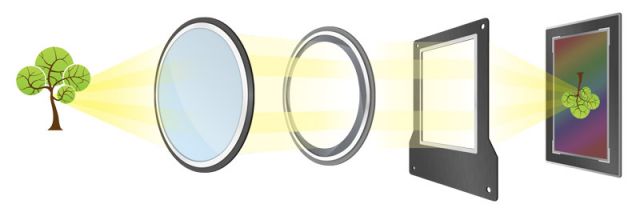Test Book of Photography

Cameras 101
The digital camera is a beautifully simple piece of technology. Every camera, be it film or digital, works in the same basic way. Light from the scene beams through your camera’s lens, through the aperture, through the shutter and onto your camera’s film or sensor. This light paints our photograph.
Point and Shoot Cameras
Point and Shoot cameras are cameras with fixed, non interchangeable lenses. Point and Shoot cameras are generally compact and automated. The camera manages everything for you automatically, leaving you to just point the camera at the scene and shoot the photo. Point and Shoot cameras are becoming more capable, but they will never match the overall image quality of an SLR.
SLR
SLR stands for Single-Lens Reflex. SLRs are the larger, more ‘professional’ looking cameras that allow you to change lenses and delve deep into the settings. The name SLR explains the mirror and viewfinder system within the camera. Light comes through the lens, bounces off a series of mirrors and can then be seen through the viewfinder. By changing lenses you can explore new realms of photography, from macro to zoom, from wide angle to tilt shift. SLRs are wonderfully expandable, incredibly capable cameras.
Megapixels
Every digital camera contains a digital sensor that captures light and creates your photograph. Your photograph is made up of millions of dots of light. Each tiny dot of light is called a pixel, so your camera’s Megapixel specification denotes the size and resolution of your photos. More megapixels will allow you to print your photographs in a larger size or zoom in further on a computer. Be careful though when looking at cameras. More megapixels doesn’t always mean a better quality photo. Some cheap, high megapixel cameras can produce noisy, low quality images. Megapixels are an important characteristic of a camera, but they don’t mean everything.
Aperture
When you’re in a dark room, the pupils in your eyes will dilate to let as much light in as possible. Switch the light on and you’ll find that your eyes instantly contract so that you’re not blinded. On a camera, the aperture works in a very similar way. It expands to let in more light when it’s needed, and in brighter situations it shrinks to ensure your photo isn’t over exposed.

By controlling your camera’s aperture you are controlling the amount of light that enters the lens. Aperture is controllable by a measure known as F-Stops. Each F-stop represents a different level of expansion or contraction. A smaller F-Stop, such as F2.8 represents a larger aperture and a wider opening. A larger F-Stop however, such as F22 denotes a smaller aperture and smaller opening.
Aperture can be controlled by switching your camera to Aperture Priority mode (A) or to Manual mode (M). There you’ll have the ability to adjust the Aperture in set increments. Cameras generally have around 10 aperture increments to choose from.
By changing your aperture you have the ability to manipulate the exposure of your photo, as well as your photo’s Depth of Field. This is something we will discuss in the next section.
The best way to learn about aperture is to play around with it. Switch your camera into Aperture Priority or Manual mode and look at the effect changing your aperture has on your photo, as well as on your other settings.
Testing the & persand
Testr14
